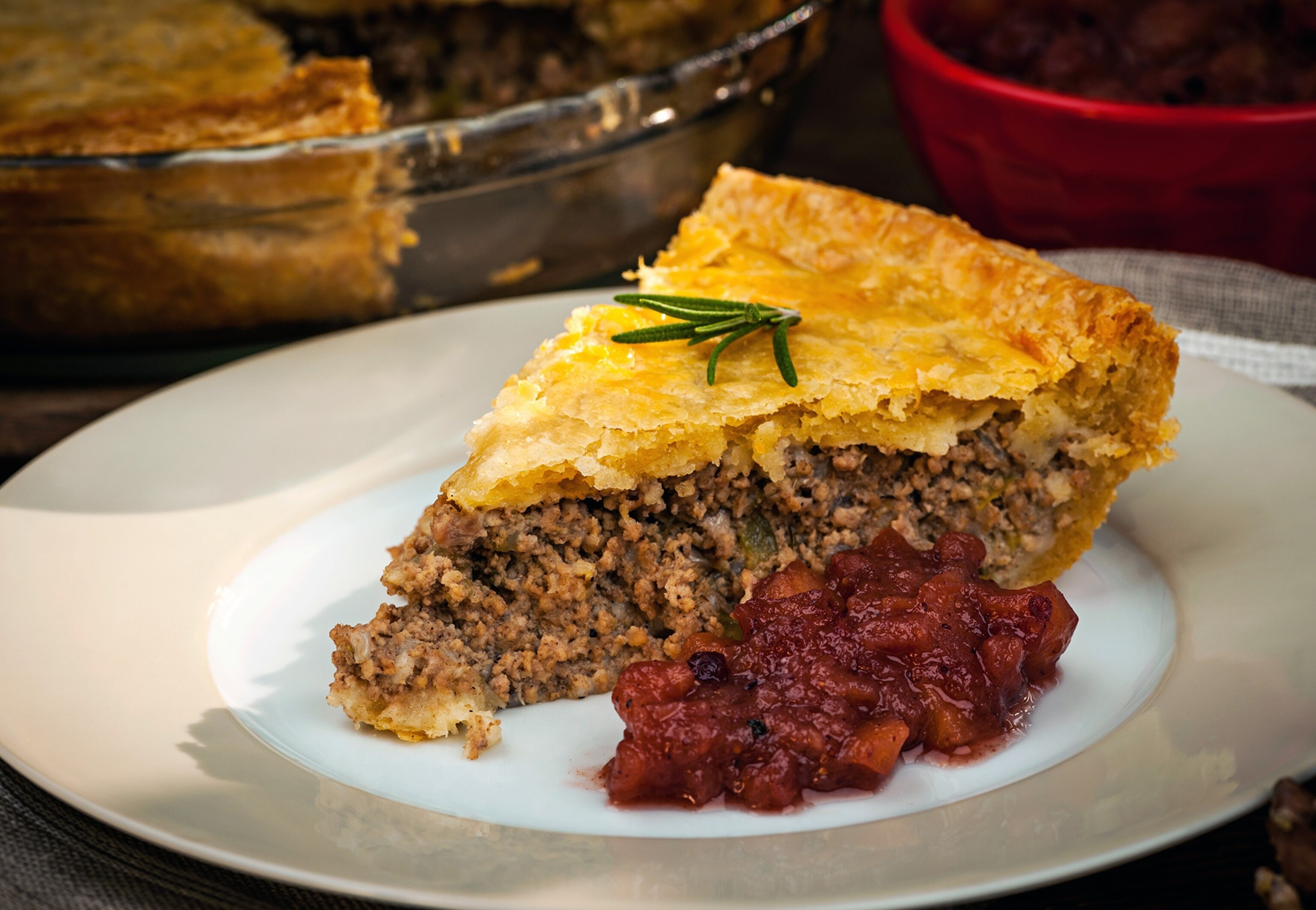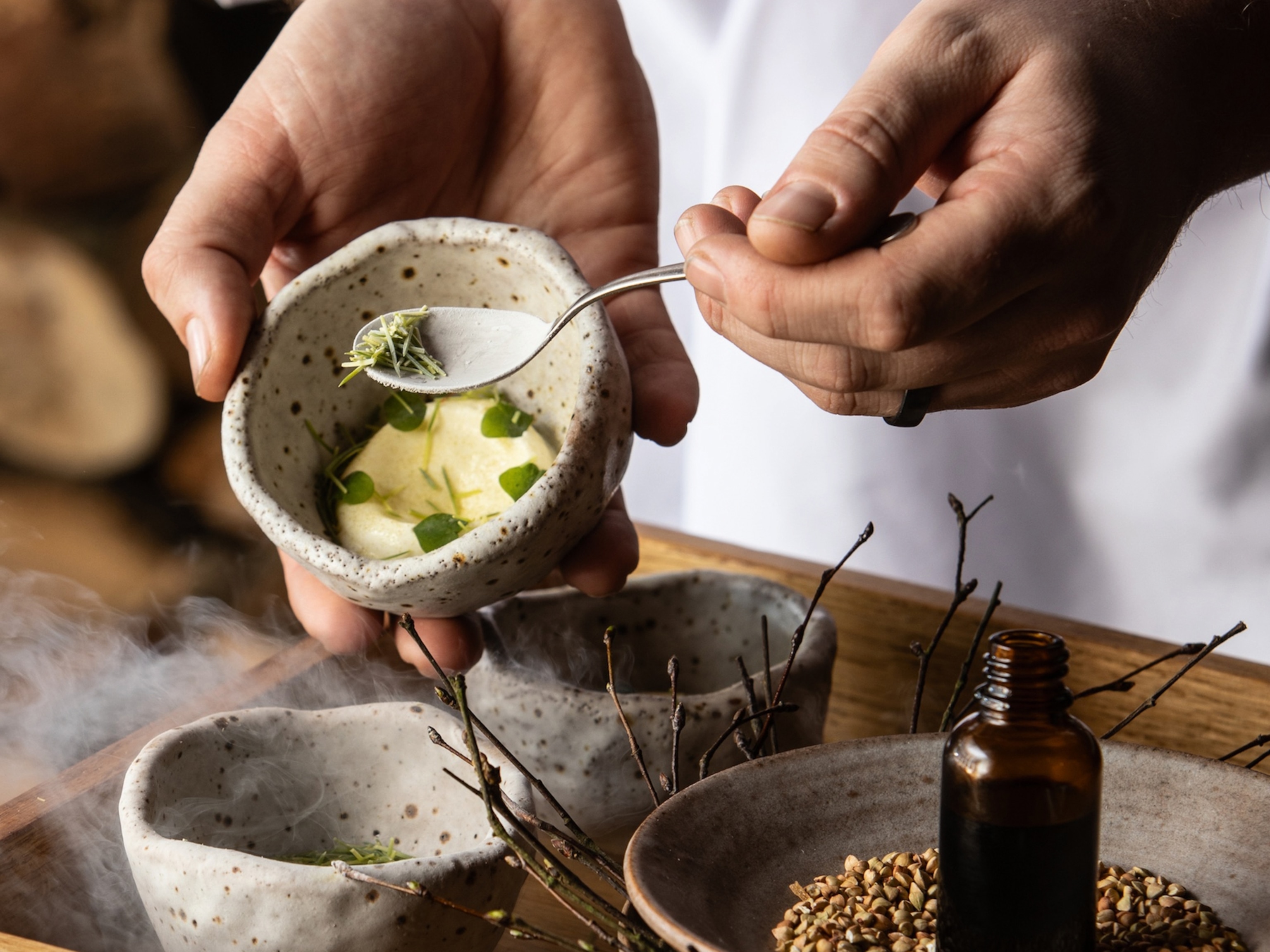
Got Cretons? If You’re in Acadian Country, You Better
Every couple of weeks restaurant owner Keith Pelletier and his mother, Odette, pack 16 pints of a homemade meat spread into containers and deliver it to an area senior citizens home. There, it’s served by tiny ice cream scoop at breakfast.
Moving into a senior community often involves surrendering some freedoms, but the elderly residents of Fort Kent, Maine, won’t do without their cretons, a savory spread made of ground pork, onions, and spices that’s typically smoothed onto toast and eaten as a breakfast food. It’s one of the many aspects of life in this corner of Maine that’s steeped in generations of Acadian French culture. Keith Pelletier’s restaurant, Dolly’s (started by his mother 27 years ago), is one institution that’s helping to keep Acadian culinary culture alive.
In the St. John Valley of northern Maine, a dialect known locally as Valley French is still quite common. Madawaska, population 4,000, is over 80 percent francophone. Yet as the population ages and assimilation takes its toll, French is heard less and less, and the future of the region’s traditions is uncertain. But food traditions are often the last to die—and they still hold sway here.

It’s tempting to chalk up the French found in northern Maine to “spillover” from nearby Quebec, but the history of French in this valley is more complex. The string of towns along the St. John River in Maine was once hotly contested by France, England, and the United States.
Beginning in 1755, many of the Acadians—those descended from French colonists of the region—were forcibly deported. Some fled to Louisiana, where Acadian stews became gumbos, and bland sauces sprang to life with cayenne pepper. Others fled into the thick woods of northern Maine to wait out the political turmoil. When it was over, they emerged with their culinary traditions intact. Thick stews, meat pies, and ployes remain mainstays of Acadian culinary culture.
Today, the secrets of Acadian cooking can still be found in the kitchens of some old-timers, and a couple of mom-and-pop restaurants in the valley have been trying to introduce Acadian dishes to a new generation.
Here are three Acadian dishes that cling to hearts and palates in Maine’s St. John Valley.
Cretons: “It’s a delicacy,” Judy Paradis, a former state legislator who dines at Dolly’s often, says of the spread. The meat in the creton is simmered over a long period until tender and stirred constantly.
Ployes: Ployes are pancakes made from locally grown buckwheat, which sparkles yellow in the fields during the autumn harvest time. Some white flour, baking powder, and salt are added. “Every person who cooks them has their own different variation” Keith Pelletier says. The color of the ployes can vary according to the type of buckwheat used. The grill fires up at Dolly’s beginning at 9 a.m. most mornings and doesn’t stop. Popular ways to enjoy ployes include savory spread with cretons or soaked in maple syrup and spread with butter. Brown sugar is also a popular topping.
Tourtière: Imagine surviving a harsh, long winter in the hinterlands of northern Maine. You’re going to want carb and protein-packed comfort food. Enter tourtière, essentially a meat pie packed between two crusts. It looks kind of like shepherd’s pie. Though it makes the menu as a special at Dolly’s on occasion, it’s too labor-intensive to be offered regularly. Word of mouth spreads fast here, so when it does make an appearance, so do the old-timers in droves.

“We slice potatoes and use a nice beef, very thinly sliced, [and] cook the meat with the onions, and after we add all the potatoes that we slice, a tiny bit of gravy, salt, and pepper. Sometimes we add mushroom,” Odette Pelletier says.
Other Acadian dishes that are popular at Dolly’s and elsewhere in the valley include graham cracker pie and haddock served in white sauce. And as one elderly Acadian lady advises: “Never put noodles in your chicken soup, always dumplings.” But Acadians aren’t immune to mainstream food.
“Wow,” says Keith Pelletier, “when I introduced a cheeseburger basket to the menu with fries, that sold like hot cakes,”
Make that sold like ployes.
Kevin Williams has written for The Washington Post, Al-Jazeera and National Parks Magazine. His specialty is Amish culture. Kevin Williams is editor of the Amish culture website, Amish365.com. Fnd him on Twitter.





